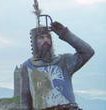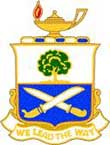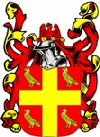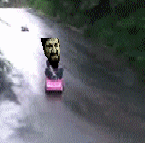treespider
Posts: 9796
Joined: 1/30/2005
From: Edgewater, MD
Status: offline

|
quote:
ORIGINAL: jwilkerson
Here are some thoughts I posted last year on the Uber WITP forum ( a group of about 20 of us started this up to determine level of interest in a WITP-2 ... a.k.a. Uber WITP ) these ideas were not received warmly by all .. and I posted 2 revisions to this document subsequently .. but for purposes of this discussion, I'd like to go back to the original version first.
Ground System
1. Overview: Below appears a first attempt to describe a ground system. This is not to say we must use this system, but we need to start getting some ideas floating. In case you think you recognize some of this, I am “stealing” from both CNA (Campaign for North Africa – and old SPI board game) and EIA( and old Australian Design Group board game ) and probably other games too ! And then I’m making some of this up ( I think ! ).
2. General. This system is primarily NOT a same hex combat system. WITP ( both the board game version and the computer game version ) are same hex combat systems. So I’m assuming we can make a non-same hex system work. Due to the need for Island combat we will need a sub-system for same hex combat, but I’m hoping we can fix mainland Asian combat by removing the same hex system and yet still have a same hex sub-system that will allow Island combat to take place correctly.
3. Front and Back. As per CNA this system assumes that within each hex some troops are forward ( defending the front line ) and other troops are back behind the lines providing support of some type. This protects the support troops from being caught in the battle and also is the way real battles are fought ( more or less ). Front line troops will be assumed to be more or less evenly distributed across the “front”. The “front” being defined as those hexsides known to contain enemy troops. It is envisioned that the player will be allowed to adjust this distribution ( by designating some units to be “pegged” to a specific hexside. It is also envisioned that the player may allow the AI ( i.e. the hex commander ) to adjust the distribution. Troop types will have default roles ( line or support ) also terrain may modify the default role for a troop type ( armor for example would default to support in Jungle or swamp terrain ). Artillery could be either forward or to the rear. If forward - artillery could be used to support the front with direct fire but would be more vulnerable. The role of the primary troop type of a unit, would be the role of that unit, so an armored unit might have tanks and staff and maintenance … but the unit would be “line” by default. Line units in the rear may be designated as reserves, in which case they would reinforce the front if needed. Units held in the rear may also be designated as flankers.
4. Order types. The units in a hex must have a general overall order. Order types would include.
a. Rush ( an assault ) in this case an adjacent hexsides must be designated to assault across.
b. Infiltration attack ( same as above ) Of course a rush is more of an all out attack, whereas an infiltration attack is more careful.
c. Concentrated or Broad front, this is a second attribute of a rush attack or an infiltration attack, indicating the attack is taking place or a more narrow front or on a broad front … broad front would be the default. Concentrated attacks will attempt to double up the troop density at the point of attack.
d. Flank. A flank attack will attempt to find a weak flank and launch a designated flanker force at this weak spot. A normal attack ( broad front – rush ) must be launched to pin the enemy in place. The success of the flank attack will depend on a number of factors, leadership, mobility in the terrain in question, recon points accumulated against the enemy. Length of time in the position. Training and Experience.
e. Refused Flank – this defense acknowledges weakness in the defending position, but takes steps to address this weakness by refusing the flank. This type of defense is most effective against a flank attack as essentially, the defender has correctly guess the attackers plan and designed the defense specifically against it.
f. Cordon – this is a broad front defense, where front line forces are evenly distributed across the front. It is most effective against a broadfront attack.
g. Hedgehog. This defense assumes the front is withdrawn to cover more valuable positions in the hex. This defense allows enemy guns which are forward to attack installations ( ports, airfields, supply dumps ) in the hex but optimizes the defense against “concentrated” attack.
h. Patroling, this order attempts to determine what is in the adjacent hex. There is higher risk to recon units if this order is using this order.
i. Probe, stronger form of recon using line units. Will result in formation of a bridgehead in the adjacent hex if the probing force is significantly stronger than the defending force.
j. Delay – opposite of probe, this defending order type will attempt to use economy of force to slow down an advancing enemy, but is in support of a general withdrawal plan. If met by sufficient force, especially by broadfront attack, delay forces will withdraw from the hex. Front line ( rear guard ) forces will take losses but forces held in the rear ( covered ) will rarely take losses. On the other hand against a probe – the delaying action will usually hold the hex.
k. Engineer support. Front line units may be ordered to have engineer support ( with the engineer units thus in the front line ). Engineer support will tend to retard enemy movement and enhance friendly movement, at the cost of greater casualties for the engineers.
l. Armor support. In terrain types where armor is a support type. Armor in the front line is assumed to be supporting the friendly units by providing fire support. The number of armored vehicles which can support is severely constrained.
m. Artillery support. Artillery in the front lines may be more effective ( depending on fire control doctrine and depending or enemy fortification type ( and other factors ) but will be more vulnerable to enemy fire.
5. Hexsides and counter attacks.
a. If an enemy attack achieves a “breakthrough” result. Reserves and units allocated to adjacent hexsides may attempt to counterattack to defeat the breakthrough. Real war narratives seem to indicate that counterattacks were most likely to be successful if launched immediately, even if only small numbers of troops were involved. The disorganized state of the attacker is thus apparently quit high immediately after the breakthrough, but returns to a greater state of organization “fairly” quickly. Obviously a number of factors would bear on this equation. Thus small number of forces from the hex in question may counterattack, whether in reserve or manning an adjacent hexside. The respective order types of the players will bear on the chance of a counter attack and the amount of delay before it is launched and hence whether the counter attack is successful. If the enemy is launching a broadfront attack, then the counterattack chance by front line troops is much smaller, they are pinned by attacking enemy forces. However, reserves from within the hex may be able to counterattack. If the attacker had “concentrated” attack orders, then front line troops nearby which are not being attacked with have a better chance of being able to counter attack. Front line troops counterattacking with have the smallest amount of delay. Re-area reserves pegged as reserves to the hexside in question will be the next quickest to react. General reserves will be the slowest. Once a “breakthrough” result has occurred, a clock will start ticking. And a die roll will be made for
b. (a) front line troops assigned to the hexside attacked ( only if concentrated attack orders are in place ). If defender has hedgehog orders, then % chance of counter attack is increased, if defender has cordon, then % chance is decreased. If this percentage fails for the defender, then the clock advances and a die roll is made for front line troops assigned to adjacent hexsides ( if any ). In this case broadfront attack will reduce their chance of counter attacking, concentrated defense will increase it. Broadfront defense will increase, hedgehog will decrease. If this roll is missed, then the clock is advanced and reserves pegged to the hexside in question are checked. Broadfront defense will slightly decrease their chance. If this roll fails, then the clock advances and general reserves are checked. Again, broadfront defense will slightly decrease their chance.
c. If a counterattack happens then several factors will determine the success of the counterattack. This post is not meant to be a final design for this system, but merely a description of the concepts, hence I won’t drill into the details here .. but factors such as time elapsed on the ticking clock, mobility of the counterattacking forces in the present terrain, leadership, training, experience, weapons, terrain, weather, fire support, and so on. A counterattack may abstractly represent several counter attacks occurring simultaneously, but in the “system” we will execute ( or not ) one counterattack per breakthrough result per hex, per game impulse.
Interesting the idea for discrete game impulses has also been introduced into the A2A model. The one question I have is how would the engine account for simultaneous attacks across multiple hexsides?
quote:
6. Command
a. Within a hex, there should be one or more HQs for a side. Preferably one. If more than one, then a penalty should apply. Various orders will be applicable at the supreme HQ level ( within the hex ) though some orders may be applicable at lower levels.
Why should a penalty apply? I would think if you had more HQ's the the individual units should get a bonus for immediate response from the HQ...unless your implying that multiple HQ's would attempt to assume control of the same unit in the hex and suffer coordination penalties.
quote:
7. Bridgeheads, Beachheads, Airheads and hedgehogs.
a. The need for same hex combat will exist in this game. The system described here proposes to handle this with a combination of bridgeheads, beachheads, airheads and hedgehogs.
b. When opposing forces occupy the same hex, one of these combatants will be the attacker and the other the defender.
c. First in order to enter a defender’s hex, either combat results, or terrain or method of entry into the hex may dictate that same hex combat occur. We will first discuss the three “methods of entry”.
d. River crossing. When an attacker is attempting an opposed river crossing, some combat results, will dictate that a bridgehead has been formed. In the case, the defender still controls the hex all installations in the hex, but the attacker has created a lodge-ment, presumably with rafts, ferries and perhaps pontoon bridges. Because a river crossing will occur across a particular hexside, the bridgehead is always associated with a particular hexside. Once a bridgehead is formed, three results are possible upon subsequent combat by forces attacking from the bridgehead … or forces attacking the bridgehead.
i. Bridgehead is expanded. In this case the bridgehead owner now owns the hex and the defender is either retreated or forced into a hedgehog.
ii. Bridgehead is eliminated. In the case the forces formerly in the bridgehead are retreated into the hex from whence they came and the original hex owner now regains full ownership of the hex.
iii. Bridgehead is sustained. In this case the status of the bridgehead is unchanged.
e. Beach Landing. When an attacker is performing an opposed landing upon an enemy held beach, combat results may indicate that a beachhead is formed. A beach landing may be a hexside attack ( if against the coastline of a major landmass ) or a small island/atoll attack ( if against a single hex Island ). These would be treated similarly in most cases, with the major exception of the case where an adjoining hex is held for forces friendly to the forces creating the beachhead. But otherwise a beachhead is very similar to a bridgehead. We may decide that if a beach head is eliminated that “retreating” forces take heavier losses when reboarding their vessels. The cases of this happening in WWII are few and far between ( but greater than zero ) … Milne Bay and Dieppe being the ones I can think of.
f. Air Head. Airborne units landing in enemy occupied hexes will create an airhead and airhead is not associated with a hexside and thus is considered to be an abstract contiguous region with the hex in question. The airhead is completely surrounded by the enemy forces in the hex. Whether the attacking airborne forces have captured any installations with be left to the developer of this system, but it cannot be ruled out entirely. The purpose of the attack may have been to capture specific installations. But the subsequent results are as per 7(d) except if the airhead is eliminated then the forces in the airhead have either become prisoners or been evacuated to an adjacent friendly hex.
Perhaps the single hex combat should be universal especially if the map scale remains constant.
Instead of ZOC's for hexes introduce ZOCs for hexsides ...something which is not practical for cardboard and paper but could be implemented on the computer. The ZOC's in a hex indicated by a letter on one side of the hexside. If an enemy unit enters the hex the hexside it enters from becomes contested. After one days battle the results could indicate that the the hexside changed control or remained contested. Units would only be allowed to leave a hex from a hexisde they control or a contested hexside.
Bases and other facilities could also be tied to a hexside to reflect the relative position of the base within the hex. A port could be place on hexside 3 whereas the airfield is on hexside 6.
quote:
8. Firepower
a. This system assumes that firepower is predominate. Thus all forms of combat will resolve themselves down to a defensive fire phase and an offensive fire phase. If the developer of this system deems it appropriate a subsequent “melee” phase may need to be added as well. If possible, all fire should be against the terrain. Of course the number of shooting weapons, the terrain, the relative troop densities and a number of other factors need to be considered, but it is expected that most battles will be resolved by the firepower results, rather than by “cold steel melees”.
Why shouldn't the shooting be simultaneous?
quote:
9. Retreats
a. This system will of course require retreats, Just like in current WITP, a retreat immediately displaces the retreating forces 60 miles away. The attacker then must traverse this distance before he can again engage the enemy. This is obviously an abstraction, but a non-same-hex system will enable to forces causing the retreat to be able to engage immediately. So now we must be attune to the problem of successive combats by a stronger force against a weaker force allowing an advance that is too rapid. I’ll leave it to the developer to work out how to deal with this problem.
See the above on hexside control.
quote:
10. Recon
a. Ground force Recon from within the hex in question should count the most towards success or failure of events affected the hex in question. Strategic recon assets would have little applicability to events inside a hex from a ground combat perspective. It just was not possible to pass strategic Intel down to the forces in the trenches fast enough to be of use.
No problem
< Message edited by treespider -- 3/19/2006 2:45:41 PM >
_____________________________
Here's a link to: Treespider's Grand Campaign of DBB "It is not the critic who counts, .... The credit belongs to the man who is actually in the arena..." T. Roosevelt, Paris, 1910 |
 Printable Version
Printable Version




















 .) Assume that hex as a neutral hex because no forces are in it. If you want to cut off enemy forces that are moving in your hinterland a continuous frontline is the only solution that in real life can prevent enemy supply operations.
.) Assume that hex as a neutral hex because no forces are in it. If you want to cut off enemy forces that are moving in your hinterland a continuous frontline is the only solution that in real life can prevent enemy supply operations.  . The combat elements have a range with direct fire of up to 2 km / 1.3 miles. The normal field artillery has a range of up to 10 km / 6 miles into enemy territory. Especially direct fire but also indirect fire depend on visibility of the target. At night this visibility will drop to less than 1 km / .6 miles. Artillery can of course fire 'blind'but this will greatly reduce the effectiveness. But even during day combat force will not be able to 'control' the enemy within combat range. But they are able to 'influence' him. In a tactiacl game with hex sizes of 1 km / .6 miles ZOCs may be useful. In a 60 miles hex forces can move in a corridor of 48 miles without any groundbased hostile interference. The 'ZOC'doesn't make sense with 60 miles hexes and should be skipped without replacement.
. The combat elements have a range with direct fire of up to 2 km / 1.3 miles. The normal field artillery has a range of up to 10 km / 6 miles into enemy territory. Especially direct fire but also indirect fire depend on visibility of the target. At night this visibility will drop to less than 1 km / .6 miles. Artillery can of course fire 'blind'but this will greatly reduce the effectiveness. But even during day combat force will not be able to 'control' the enemy within combat range. But they are able to 'influence' him. In a tactiacl game with hex sizes of 1 km / .6 miles ZOCs may be useful. In a 60 miles hex forces can move in a corridor of 48 miles without any groundbased hostile interference. The 'ZOC'doesn't make sense with 60 miles hexes and should be skipped without replacement. 


 .
. 

 New Messages
New Messages No New Messages
No New Messages Hot Topic w/ New Messages
Hot Topic w/ New Messages Hot Topic w/o New Messages
Hot Topic w/o New Messages Locked w/ New Messages
Locked w/ New Messages Locked w/o New Messages
Locked w/o New Messages Post New Thread
Post New Thread